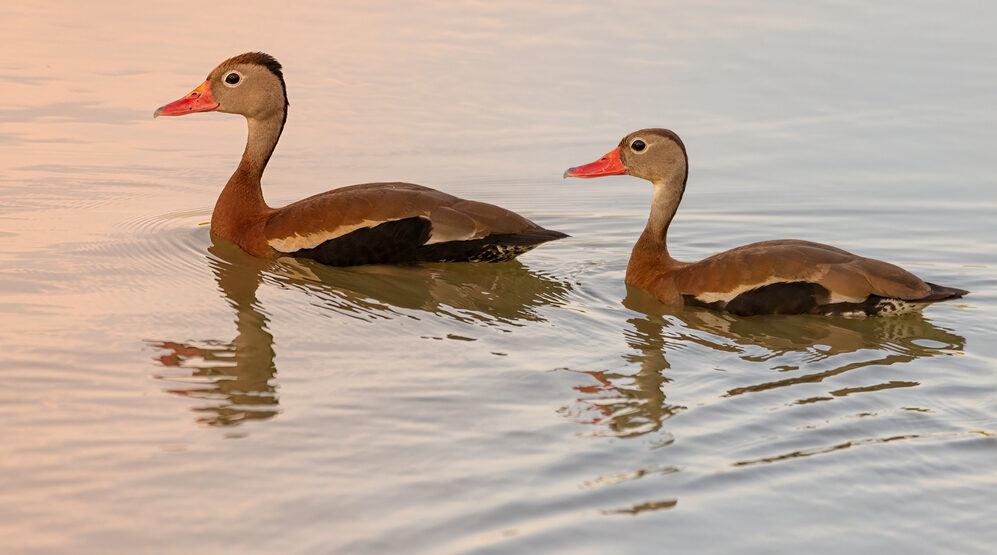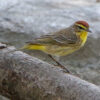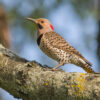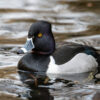Black-bellied Whistling-Duck, Dendrocygna autumnalis
Bill Rowe
And now for something completely different…a bird that was once unknown in Missouri but is now spreading so fast that we can barely keep up with it. And, in a pattern we are now accustomed to, it’s a southern bird spreading north. But let’s back up and fill in the picture: the Black-bellied Whistling-Duck is a bird of Middle and South America that made its way up into south Texas many decades ago and became common there. By the 1970’s and 80’s, it was spreading northward into the southern Great Plains and mid-south states, and eastward into Florida; yet even by 2002 it had occurred just four times in Missouri, leaving it at “accidental” status. In the intervening 20 years, it has not only shown up many more times in our state, especially the southeastern part, but has also started nesting here. While still rather rare in most parts of the state, it could turn up just about anywhere; see below for its local St. Louis status. It likes marshes, lakes, and ponds, but these can be on farms or in urban or suburban parks as well as in wilder areas. The Black-bellied is one of a distinctive group of eight whistling-ducks around the world, formerly known as “tree ducks,” and indeed this species does often nest in tree cavities—but it will also use man-made boxes as Wood Ducks do, if the holes are made a little bigger. These birds are not closely related to other types of ducks, as you can see from taxonomically-correct bird lists, where the whistling-ducks come first and are separated from all other ducks by the geese and swans.
IDENTIFICATION: As easy as could be. An adult is a large, long-necked duck with brown neck and chest, black belly, white eyering, and bright pink bill; a full-grown juvenile is similar with a gray bill. All flying ages have a wide, bold white stripe down the center of the wing, and their loud wheezy, whistling calls are unique. The baby ducklings have a striking black and white pattern. The Fulvous Whistling-Duck also occurs in Missouri but is mostly a warm tan color all over with a dark back.
ST. LOUIS STATUS: Not yet common, but showing up seemingly at random around our area. Pairs have raised their young at such dissimilar locations as Little Creve Coeur Marsh (banner photo, above) and Jefferson Barracks Park. Mostly a warm-weather bird, but what appeared to be a family group showed up at Riverlands in September 2017 and lingered into December.
Learn more and listen to the calls of Black-bellied Whistling Ducks here.


Flight pattern
Group of juveniles
Photo Credit: Al Smith




